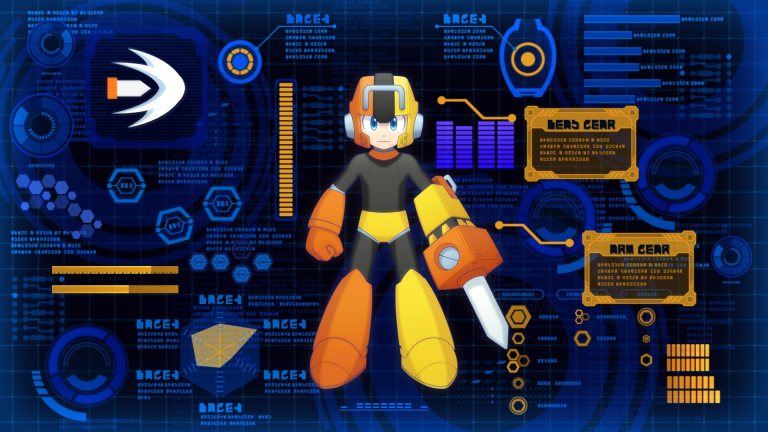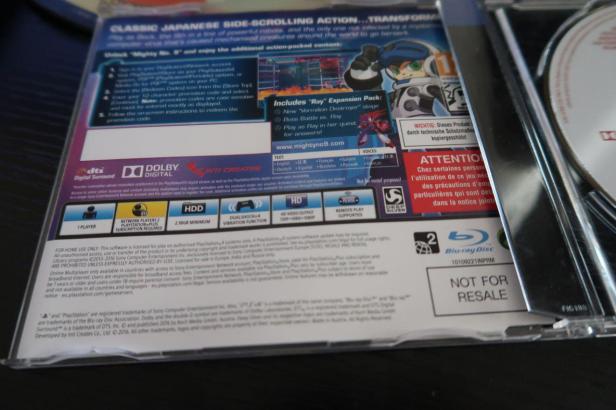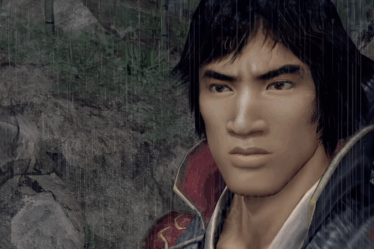
[This article appeared in Italian on MyReviews.it titled “Mega Man 11 – Recensione” .]
Recently Capcom released four collections that covered both Mega Man and the Mega Man X series, testing the relevance of this IP on today’s market. Both new players and old-time fans gathered around this rich compendium of content and both were surely happy to discover that the Japanese company had finally greenlit a new chapter of its beloved series with a modern and sleek aesthetic and new gameplay mechanics.
The eleventh iteration of the historical franchise arrives on current-gen platforms without the supervision of Keiji Inafune, the creator of the series, now busy working in the independent video game industry and recently harshly criticized for his last work, Mighty no.9. This game, developed by Comcept and produced thanks to a successful crowd-funding campaign, went through a long development cycle during which the developers kept promising features to the backers and ended up releasing a game that didn’t meet the high expectations of the fanbase, not even covering all the goals of the crowdfunding; curiously, Comcept also neglected part of the in-game contents to the critics when they received the review copies, me included.

Back to Mega Man 11, according to the director, Koji Oda, the long hiatus of the series was partially due to the departure of Keiji Inafune from Capcom, but the franchise was dormant way before that, with its last episode released in 2010 and a gap of eleven years between the eighth and the ninth iteration. Following some controversial statements, Inafune was stripped from its new series, Dead Rising, after the development was assigned to the Canadian studio of Capcom Vancouver (previously known as Blue Castle Games) and Mega Man Legends 3 for Nintendo 3DS was subsequentially canceled after his departure from Capcom.
The absence of Inafune translates in a video game that does not insist on the path taken by its last two predecessors, published in a period where retro-stylized games were very popular. Mega Man 11 presents itself as a modern product respectful of its glorious and historical past, approaching the new generation of video games using a polygonal aesthetic with a touch of anime charm. And luckily, it puts an end to the mischievous act of capitalizing on the childhood memories of the players.
While respecting the classic structure of 8 levels and 8 bosses to defeat to get their powers and consequentially pursue Dr. Wily in his new, dangerous lair, Mega Man 11 introduces a totally new approach to the action by including the ability to slow down time or enhance the power of Mega Man’s mega buster. These mechanics, combined with a competent (but far from inventive) level design gives new luster to its hardcore gameplay, still rooted in the first half of the 90s. On the other hand it would not be a real chapter of Mega Man if the level of difficulty was not at least challenging, but the steepness of the learning curve can be calibrated according to the needs of the player investing in-game currency in consumables and pieces of equipment between the levels, without mortifying anyone playing the game. Completionists, on the other hand, will have to avoid powering-up their avatar if they want to achieve all the trophies, while long-time fans will certainly find themselves at home.
Now, considering that this game formula has been explored for many years, it is difficult to move accusations related to an unlikely lack of originality altogether. Mega Man remains one of the few “jump ‘n’ shooting” games that have little to do with Super Mario’s platforming, but the level design in this title seems a little stale and the pacing of the action is not as rewarding as in the past, even if compared to the solutions adopted for the ninth and tenth iterations, which were produced with vastly lower production values; this eleventh chapter was published at a great distance from the predecessor, but pretty close to the publication of the Mega Man and Mega Man X collections. It is not clear if Capcom’s intention was to dedicate to his mascot a revival or a real sequel, but the end result is a game that even if being more than worthy to bear the name of this series, fails in being truly memorable under any front.
The aforementioned level design is all things considered competent, even if the exploration parts are sometimes too long and far more deadly than the bosses at their end. The graphics style adopted is certainly not a novelty, but a direct evolution of what we saw in the eighth chapter published on 32-bit consoles with pixel art ditched in favor of a three-dimensional cel-shaded aesthetic. The overworlds, while being varied in color, looks made of huge empty boxes that lack the extensive use of parallaxes and visual effects of the previous two-dimensional games, that made them alive and filled with moving objects in the background, probably to favor a more readable action.
The mechanism of the double gear, the device that allows the players to bend the passage of time and enhance the power of the blue bomber, is certainly an interesting idea – and can also be combined with the use of the power-ups obtained by completing each level – but it is perhaps a bit “out of place” in a context like the Capcom series. The idea behind Mega Man (and most of Inafune’s past works) has always been to start as weaklings compared to enemies and to obtain power-ups with tears and efforts while improving performance on the field in the process. This introduction is certainly excellent for newcomers who will be able to be introduced to the mechanics and the harsh difficulty spikes of the Mega Man series but at the same time betrays with the philosophy behind its game design, that rewarded players based on their efforts. And yet I still have to understand what happened to Proto Man and Bass, recurring characters who were playable in the tenth episode who are M.I.A. in this game.
To complete a definitely solid gaming experience that nonetheless lacks creative flashes there is an extra mode that offers different challenges with online leaderboards, making possible to challenge friends and the whole world to the best score. This arcade derivation of the title is a very interesting way to increase its longevity by proposing variations that include not only returning to the past levels facing new objectives but also feature new levels (after completing the main campaign) that will certainly test the skills – and above all the patience – of the fans of the saga and of the completionists. And getting the rarest achievement/trophy is, without doubt, the biggest challenge of the game.
Mega Man 11 is the great return of the historical Capcom mascot after years of silence. More than a full-fledged rebirth, the eleventh iteration of this video game series looks like a transitional chapter that accommodates the new audience with a curve of difficulty that can be shaped according to their needs and a wide range of post-game challenges to satisfy the appetite of fans and long-time players. I hope that the rough edges of this new course of the saga can be smoothed out and perfected in future sequels.


